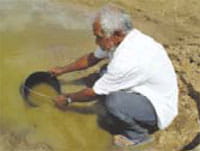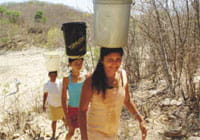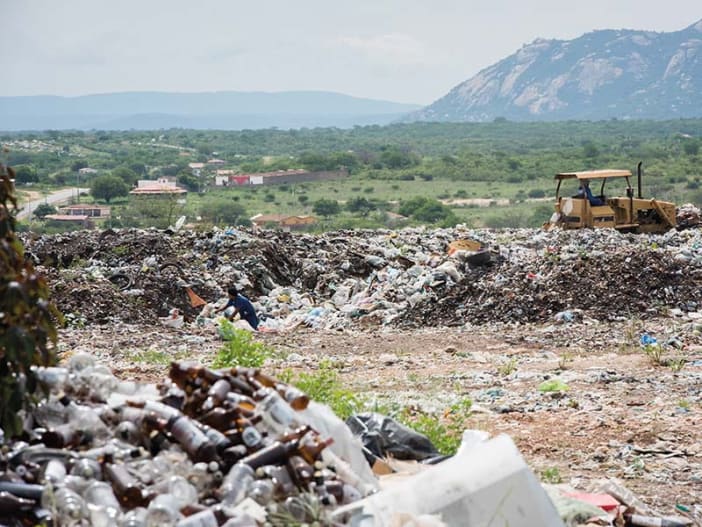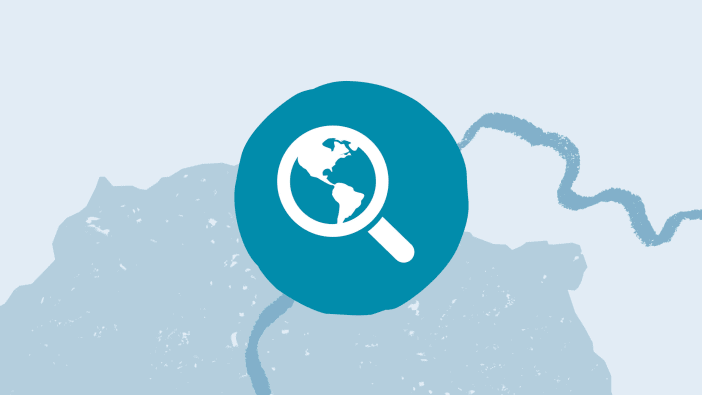Neto remembers that in the 1980s there
was a stream running through their
farm that flowed nearly all year. In the
1990s the water level fell gradually.
This meant that three months after
the rainy season ended the stream
was dry. To help solve this problem
the family built a dam in 1999. ‘Water
from the dam is used for irrigation
and livestock. We are now irrigating
much more than we did five years ago,
because it is hotter and drier for half
the year. We used to irrigate once a day,
now it’s twice, but even so the plants
wither. We are concerned we may run
out of water in the future as the climate
is now so variable.’
Sustainable agriculture
José Ivan Monteiro Lopes lives with
his parents and family in the Pajeú
region in Pernambuco state. In 1998
there was a drought in the area and
Diaconia established an emergency
help programme. Their first objective
was to improve water storage capacity
for families. They established a foodfor-work
scheme where families were
given food in exchange for digging
wells and building water tanks to
collect rainwater from roofs.
The following year Ivan’s family
was chosen, together with five
other families, to participate in a
food production programme using
small-scale irrigation. One condition
was that instead of their traditional
practices of slash-and-burn and
their use of chemicals, the families
should start to use practices that
respect the environment and people’s
health. They now use sustainable
agricultural systems that provide
them with enough food and with
surplus products to sell at market.
Ivan believes that the climate is ‘now so
out of balance that even the experience
of our oldest people to predict the
rains no longer works. Before, in years
with good rains, we produced maize
and beans watered only by rainfall.
There was enough for us to eat and
sometimes even to sell. Today we need
to use irrigation to guarantee food for
the family.’
‘Reading’ nature
José and Isaura Mendes live in
Pernambuco state in a semi-desert
region that suffers from drought. There
are regular losses of livestock on their
farm because of the lack of fodder.
The family hears about climate change
on the radio. They are very concerned
about the melting of ice in the Antarctic
and hurricanes. They believe these
changes are caused by people’s lack
of care for ‘the things of nature’.
They are very worried by the ‘rise in
temperature’.
José comments: ‘Winters are shorter
and the rainfall is more irregular. It
used to start raining in October and
continue until July every year. The
local stream that runs through the
village either had surface water, or
people could easily collect water there
by digging a little hollow. Today it’s
much more difficult to find water
there. Clearing trees from the banks of
the stream and elsewhere around the
springs has made this situation worse.’
José uses irrigation but still finds their
plants suffer from the heat. Their
cashew tree flowers dry out from
the sun’s heat and many of the fruits
wither. He now irrigates the plants
several times a month to keep the trees
alive.
He has some experience of natural
signs that indicate ‘good or bad rain
years’. Usually when the flowers on
traditional plants fall off unevenly
during the flowering period, it
indicates a period of poor rains. When
they flower abundantly, and the
flowers remain on the top of the tree for
a long time, the rains will be regular.
‘Older people used to know the times
of the rainy seasons better, but then,
they used to be easier to predict.’
These interviews were sent in by Marcelino Lima
who works with Diaconia-PAAF in Brazil.
Email: [email protected]












